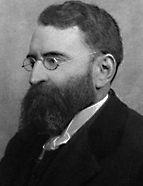

Ricardo Jorge returns, through culture, to the Porto milieu in a very interesting book – Camilo e António Ayres (1925), recovering the satirical poem As Comendas, by António Ayres de Gouveia Osório, preceded by a long text in which he recalls the conflict between the two nineteenth-century intellectuals, describing the atmosphere of monarchical liberalism in a fresco full of memories, but also of research.
In a preface to Samuel Schwarz, Os cristãos-novos em Portugal no século XX (The New Christians in Portugal in the 20th Century) (1925), he highlights his knowledge of the Jews in Portugal: he had studied the biographies of several Jewish doctors and there were even those who identified him as being Jewish himself, even because of his appearance, a situation he comments on, stating that he has no information about this.
In 1928, the age limit forced him to retire from administrative duties. Ricardo Jorge continued to participate in international conferences and publish travelogues sprinkled with history and culture. He published volumes of these accounts in his own unique vernacular style (somewhat reminiscent of Camilo), demonstrating his keen powers of observation and profound cultural depth, leaving a testimony to the times he lived through between the two world wars: Canhenho dum vagamundo (1923), Passadas de erradio, Impressões e estudos de viagem (1928), Brasil! Brasil! (1930), volumes that show his wanderings as a public health official and his interpretations of a troubled historical period. A posthumous volume, De Ceca e Meca (1961), brings together texts that he had planned for Terra Santa e Terras de Mafoma, which was never published.
The medical history aspect of his work increased in the 1930s. In 1933, Ricardo Jorge published Summa Epidemiologica de la Peste – Épidémies anciennes et modernes, one of his significant contributions to the history of medicine, presented as an “analytical and synthetic exercise, a work of selection and condensation of theses to be deduced and demonstrated”, based on previous works. This was a communication to the Comité Permanent de l’Office Internationale d’Hygiène Publique in October 1932: the historical perspective is central to the referencing of the cycles of the plague in Europe, the nosological identity of the various types of plague, virulence, lines of propagation, prophylaxis, epidemic mutation, doctrinal mutation, vector variation, new theories and the decline of the plague.
This work is financed by national funds through FCT - Foundation for Science and Technology, I.P, in the scope of the projects UIDB/04311/2020 and UIDP/04311/2020.
